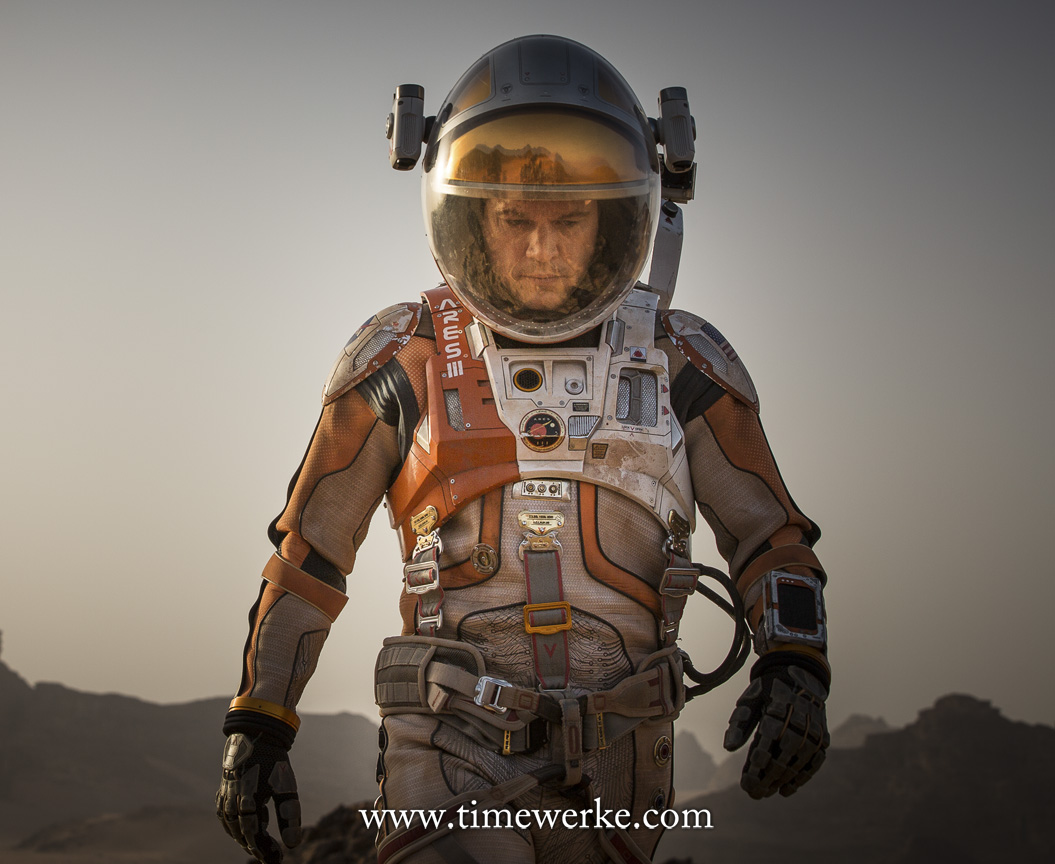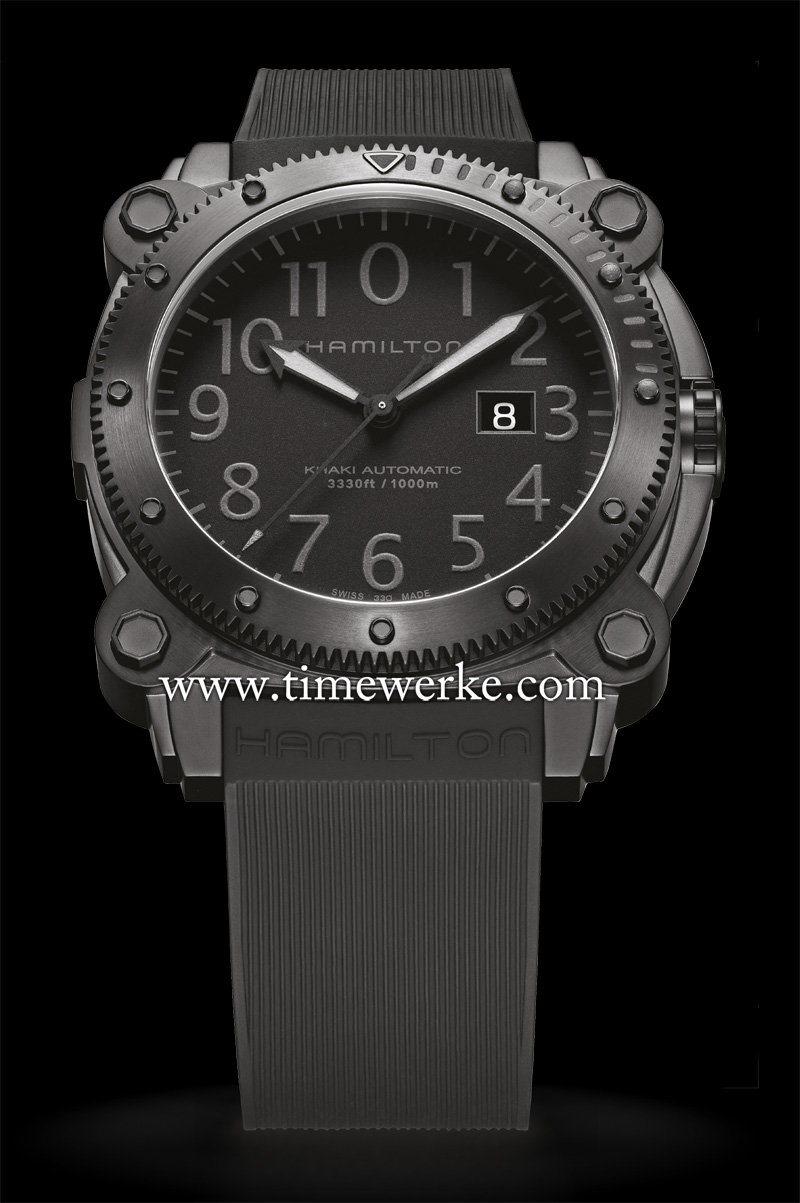
The Martian is a science fiction novel written by software engineer Andy Weir about a space mission to Mars (the Ares III mission). The novel was adapted into a Hollywood movie of the same title that was directed by Ridley Scott. Set in the year 2035, the objective of the Ares III mission is to examine Martian gullies and sediment deposits for evidence of subsurface ice. While on Mars, the crew had to abort the mission and depart on their MAV (Mars Ascent Vehicle) due to intense storms on the red planet. As the crew make their way to the MAV, Mark Watney (played by Matt Damon, above) is struck by a satellite dish. Unfortunately, his colleagues were unable to rescue him in the storm and he is left behind on the Red Planet, presumed dead. Watney was actually knocked out cold and survives the storm. The story therefore revolves around how he relies on his training, resourcefulness, wit and experience to survive the harsh Martian environment and await a possible rescue. In The Martian movie, the protagonist Watney sports the Hamilton Khaki BeLOWZERO (H78585333) automatic watch. Photo courtesy of Hamilton.
More than seventy years ago, on Sunday, 30 October 1938, the eve of Halloween, at around eight at night, America was “attacked by Martians” and the entire siege was broadcast “live” on prime time radio by the Columbia Broadcasting System.
Note: Columbia Broadcasting System is now known as CBS, the television and radio broadcast network that is the principal asset of America’s CBS Corporation.
That night, listeners were informed that a meteorite had struck a farmer’s field in Grovers Mills in New Jersey. However, it was not a rock that landed on Earth but a metallic cylinder from which aliens emerged. They were described as scary-looking Martians.
What followed were more Martian “cylinder” landings and they arrived in Chicago and St Louis. After such terrifying radio broadcasts, civilians in the area actually jammed the highways in their bid to escape from the “alien invaders”.
Thankfully, it was a fictitious Martian attack on Earth but the radio broadcast was so believable it had actually alarmed the civilian population. That radio broadcast was actually an adaptation of the science fiction novel The War of the Worlds, first published in 1898 and authored by Englishman H.G. Wells (1866 to 1946).
That 1938 radio broadcast adaptation was by the Mercury Theater Group and the play was narrated by Orson Welles (1915 to 1985). More than a century later, The War of the Worlds remains a science fiction novel.
What about the 2015 movie The Martian which is an adaptation of the science fiction novel written by Andy Weir’s book of the same name?
First self-published in 2013 by Weir, the novel, as explained by the author in a nutshell, is “… the story of an astronaut trying to survive after being accidentally left on Mars”.
The film adaptation of The Martian, written by Drew Goddard and released in October 2015, was produced by Englishman Ridley Scott (born in 1937). Ridley Scott was the gentleman who brought to us unforgettable movies like Alien (1979), Blade Runner (1982) and Black Hawk Down (2001).
The lead role in The Martian is played by Matt Damon who is the protagonist Mark Watney – the astronaut left stranded on Mars..
Now, how true-to-life is The Martian? According to Weir as reported on andyweirauthor.com, the basic structure of the Mars program in the novel is similar to the plan known as “Mars Direct” and it was changed to what he thinks is “… the most likely way that we will have our first Mars mission in real life.
However, there is one inaccuracy at the beginning of the film where there is a massive dust storm. Strong winds of more than 100 km per hour will feel more like a breeze on Mars as the density of air there is only 1% that of Earth’s. This means Martian dust storms are unlikely to knock down the Mars Ascent vehicle or the astronauts.
This factual “inaccuracy” deliberate as it allowed a more dramatic opening sequence. Right from the early days, what Weir had wanted was a novel as scientifically accurate as possible to the extent that he worked out all the maths and physics solutions for Watney’s problems encountered to ensure his survival on Mars.
After all, stranded alone on Mars and left with whatever available resources, Watney had to rely on his ingenuity to survive. “In the face of overwhelming odds, I’m left with only one option, I’m gonna have to science the sh** out of this,” Watney says to himself.
Interestingly, NASA (National Aeronautics and Space Administration) publicly acknowledges the The Martian sci-fi novel. “‘The Martian’ merges the fictional and factual narratives about Mars, building upon the work NASA and others have done exploring Mars and moving it forward into the 2030s,” states the article Nine Real NASA Technologies in The Martian published by NASA.
This highly informative article explains these technologies which are either already in use, being further refined or currently being developed. The nine technologies relate to the habitat, plant farm, water recovery systems, oxygen generation, Mars spacesuits, Rover vehicles, Ion propulsion systems for the spacecraft, solar panels to generate energy and the RTG or Radio Thermoelectric Generator.
Actually, we would like to add a tenth real technology. This is actually an existing technology not by NASA but one that has been developed and refined by the Swiss watchmaking industry – and that is a mechanical watch.
To be more precise, a mechanical self-winding watch from Hamilton – the Khaki BeLowZero automatic watch that was worn by Matt Damon in the movie.

The Hamilton Khaki BeLOWZERO (H78585333) makes it a “ten” in The Martian. The BeLOWZERO is in a 46mm stainless steel black PVD-treated watchcase that houses the ETA 2826-2 automatic movement. It features four octagonal bold screw tops around the case, a helium escape valve and is water-resistant to 1,000 metres. This watch was chosen by Ridley Scott to be worn by Mark Watney (Matt Damon) in The Martian movie because for him, it was “the hardiest watch”. Priced at US$1,845 / CHF1,795 / EUR1,395 / SGD2,430. Photo: © Hamilton.
Had Watney had been knocked out for one full day before regaining consciousness in the opening chapter, this watch would have continued working as it houses the ETA 2826 automatic movement with between 38 and 40 hours of power reserve.
The fiction landing on Mars and living on this hostile planet as depicted in The Martian may not be too far off from reality and it will also be interesting to know how extreme watches for space travel will evolve by then.
While mechanical watches work reasonably well on Earth, how they perform on alien soil, in this case, Martian land, may well be different. The gravity on Mars is 0.375 times that on Earth and its average temperature is minus 63 degrees Celsius (minus 81 degrees Fahrenheit), among other things. Will the mechanical watches we currently have work well on Mars?
Regardless, the Hamilton Khaki BeLOWZERO automatic watch (H78585333) was an apt watch for the movie as it does look like an extremely tough one to survive the Martian land. As mentioned by Ridley Scott himself, he chose the Hamilton BeLOWZERO for The Martian because it was “the hardiest watch”.
Another article on timewerke.com that may be of interest:
Hamilton’s Ventura 80 Elvis Presley: Fit for Kings and Queens
